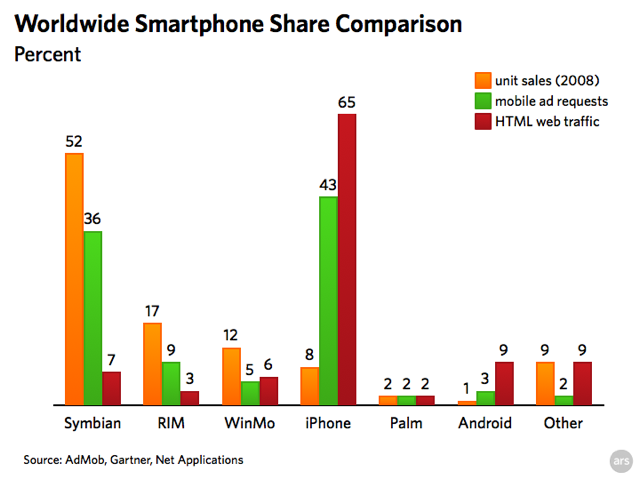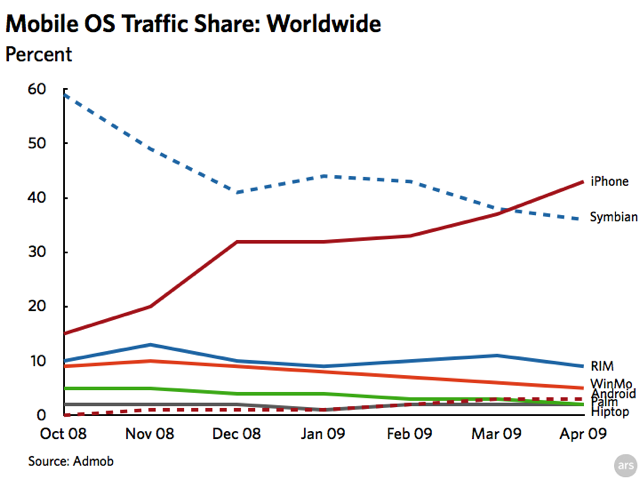The latest metrics report is in from mobile ad firm AdMob for the month of April 2009. Like most previous reports, Apple is still far and away at the forefront of mobile network use among smartphones. For the first time, however, Apple has surpassed Symbian-based smartphones for the largest share of worldwide mobile requests on AdMob's network.
The AdMob Mobile Metrics Report for April features a comparison of the major mobile platforms on the basis of market share, mobile ad requests, and mobile "HTML" Web use. Market share is based on Gartner data for 2008, mobile ad requests based on AdMob's own tracking data, and general Web use based on Net Applications' Web metrics.

While the iPhone grabbed about eight percent of the 2008 worldwide smartphone market share in terms of unit sales, it was responsible for a majrity 43 percent of mobile ad requests and a whopping two-thirds of mobile Web "HTML" traffic—the "real Internet" as Apple would call it. It should be noted that AdMob doesn't count traffic from the iPod touch since it is technically not a smartphone.
Android was the other platform that had small market share in terms of unit sales, but a relatively high share of mobile ad requests and Web use. AdMob notes that on both iPhone and Android platforms, a majority of ad requests come from applications. Most other platforms show little "real" Web browsing, and only Symbian-based devices had any significant reach in mobile ad requests.

As far as AdMob's data is concerned, worldwide iPhone OS has finally surpassed Symbian as the platform making the most ad requests form Admob's network, jumping to 43 percent while Symbian fell to 36 percent. Android made a slight gain while other platforms continue to decline. In the US, iPhone made a big leap to 59 percent after holding steady for a couple months. Mirroring worldwide trends, Android climbed steadily while other platforms declined, with RIM having the biggest drop domestically.

It's clear from the use patterns that metrics like AdMob's reveal that those platforms are used far more often for mobile Web and application access. While the newer iPhone OS and Android platforms are posting relatively small share numbers, they—along with Palm's coming webOS—seem to be the future of mobile computing.
reader comments
15